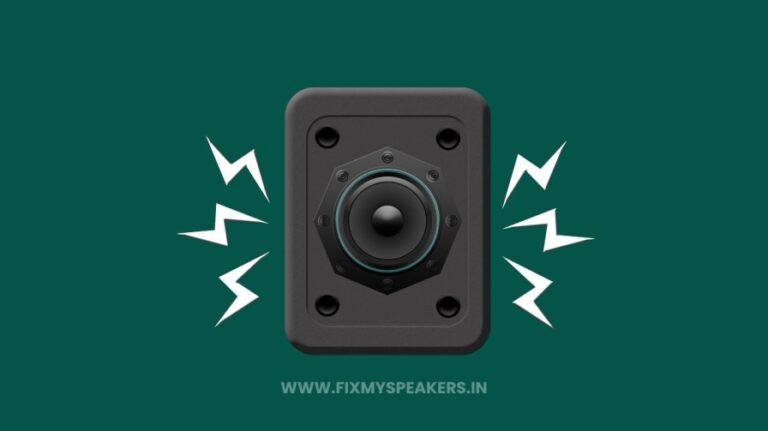Keeping your smartphone’s speakers in optimal condition is crucial for maintaining sound quality. Over time, dust and debris can accumulate in the tiny speaker grilles, leading to muffled audio and reduced performance. Fortunately, using speaker dust cleaning sound is an effective way to dislodge these particles and restore your device’s sound quality. In this comprehensive guide, we will walk you through everything you need to know about using sound frequencies to clean your speakers.
Understanding Speaker Dust Cleaning Sound
Table of Contents
Speaker dust cleaning sound utilizes specific audio frequencies to create vibrations that dislodge dust and other debris from your speakers. These sounds are specially designed to target the frequencies that most effectively shake loose the particles trapped inside your device’s speaker grilles.
How Does It Work?
The concept behind speaker dust cleaning sound is simple but effective. By playing audio at a low frequency, typically between 100Hz to 250Hz, the sound waves generate vibrations. These vibrations travel through the speaker membranes, causing any loose dust or debris to be shaken free. The particles are then expelled through the speaker openings, often making a noticeable difference in sound clarity.
Step-by-Step Guide to Using Speaker Dust Cleaning Sound
Step 1: Choose the Right Audio Source
The first step is to select a reliable source for the cleaning sound. There are several apps and online platforms that provide speaker dust cleaning sound at the appropriate frequencies. Look for reputable sources that specifically offer low-frequency tones designed for cleaning speakers.
Step 2: Position Your Device Correctly
To maximize the effectiveness of the cleaning sound, place your smartphone or device on a flat surface with the speakers facing upward. This positioning allows gravity to assist in the expulsion of dust particles. Ensure that the speaker grilles are unobstructed, and remove any protective cases that may block the sound.
Step 3: Play the Cleaning Sound
Once your device is properly positioned, play the cleaning sound at a moderate volume. Start with a lower volume to prevent any potential damage to the speakers, then gradually increase the volume to the recommended level. Allow the sound to play for at least 30 seconds to a minute. You may notice a visible expulsion of dust particles from the speaker openings.
Step 4: Inspect and Repeat if Necessary
After playing the cleaning sound, inspect your speakers to see if there has been an improvement in sound quality. If you still notice muffled audio or suspect that dust remains, repeat the process. It may take a few cycles of playing the sound to fully dislodge all debris.
Step 5: Regular Maintenance
To keep your speakers in top condition, consider incorporating speaker dust cleaning sound into your regular device maintenance routine. Using the cleaning sound once a month can prevent dust buildup and ensure consistent sound quality over time.
Benefits of Using Speaker Dust Cleaning Sound
Non-Invasive Cleaning
One of the primary advantages of using sound frequencies for cleaning your speakers is that it is a non-invasive method. Unlike physical cleaning tools, which may risk damaging the delicate speaker components, sound waves gently dislodge debris without requiring direct contact.
Cost-Effective Solution
Utilizing speaker dust cleaning sound is a cost-effective alternative to professional cleaning services or repairs. Most apps and online sources that provide these cleaning sounds are free or available at a minimal cost, making it an affordable way to maintain your device.
Quick and Easy to Use
The process of using cleaning sound is straightforward and can be done in a matter of minutes. It doesn’t require any special tools or expertise, making it accessible for anyone looking to improve their device’s sound quality quickly.
Improves Sound Quality
Regular use of speaker dust cleaning sound can significantly improve the sound quality of your device. By keeping the speaker grilles free from dust, you ensure that your speakers operate at their full potential, providing clear and crisp audio.
Alternative Methods for Cleaning Speakers
While speaker dust cleaning sound is highly effective, there are additional methods you can use in conjunction to ensure your speakers remain dust-free.
Using a Soft Brush
A soft brush with fine bristles can be used to gently sweep away dust from the exterior of the speaker grilles. This method is particularly useful for removing surface-level debris that may not be dislodged by sound alone.
Compressed Air
Compressed air can be used to blow out dust from the speaker openings. Be cautious when using this method, as excessive pressure can damage the speaker components. Use short bursts of air and keep the nozzle at a safe distance from the speaker.
Cleaning Putty
Cleaning putty or gel is another alternative that can be used to lift dust from the speaker grilles. The putty is pressed onto the surface, and when removed, it pulls out any trapped particles. This method is effective for reaching areas that are difficult to clean with a brush or compressed air.
Preventative Tips to Avoid Dust Build-Up
Use a Protective Case
A good quality protective case with speaker covers can prevent dust and debris from entering the speaker grilles in the first place. Look for cases specifically designed with dust protection in mind.
Avoid Dusty Environments
If possible, try to keep your device away from dusty environments. If you frequently use your device outdoors or in dusty conditions, consider cleaning your speakers more regularly.
Store Your Device Properly
When not in use, store your device in a clean, dust-free environment. Using a protective pouch or bag can help keep dust from accumulating on the speakers.
Conclusion
Using speaker dust cleaning sound is an effective, non-invasive, and cost-efficient method for maintaining your device’s sound quality. By following the steps outlined in this guide, you can easily remove dust and debris from your speakers, ensuring they continue to deliver crisp and clear audio. Regular maintenance using these techniques will help prolong the life of your device’s speakers, keeping them in top condition for years to come.
